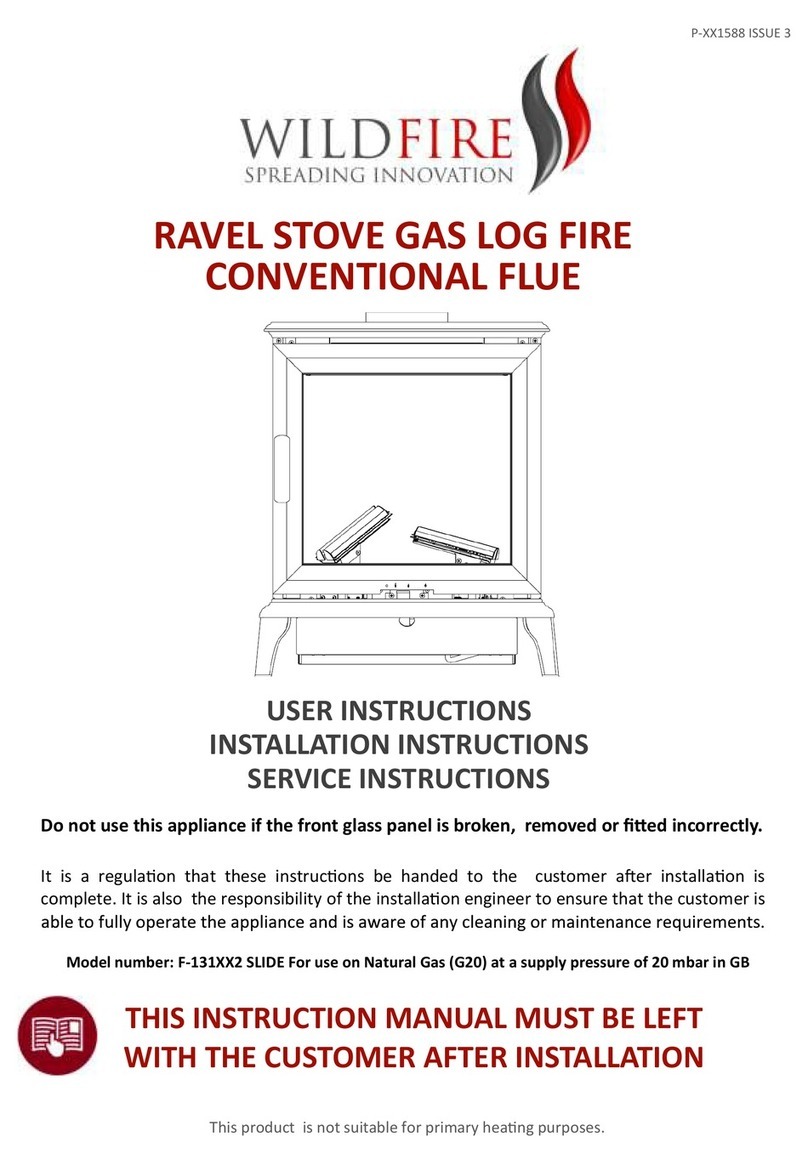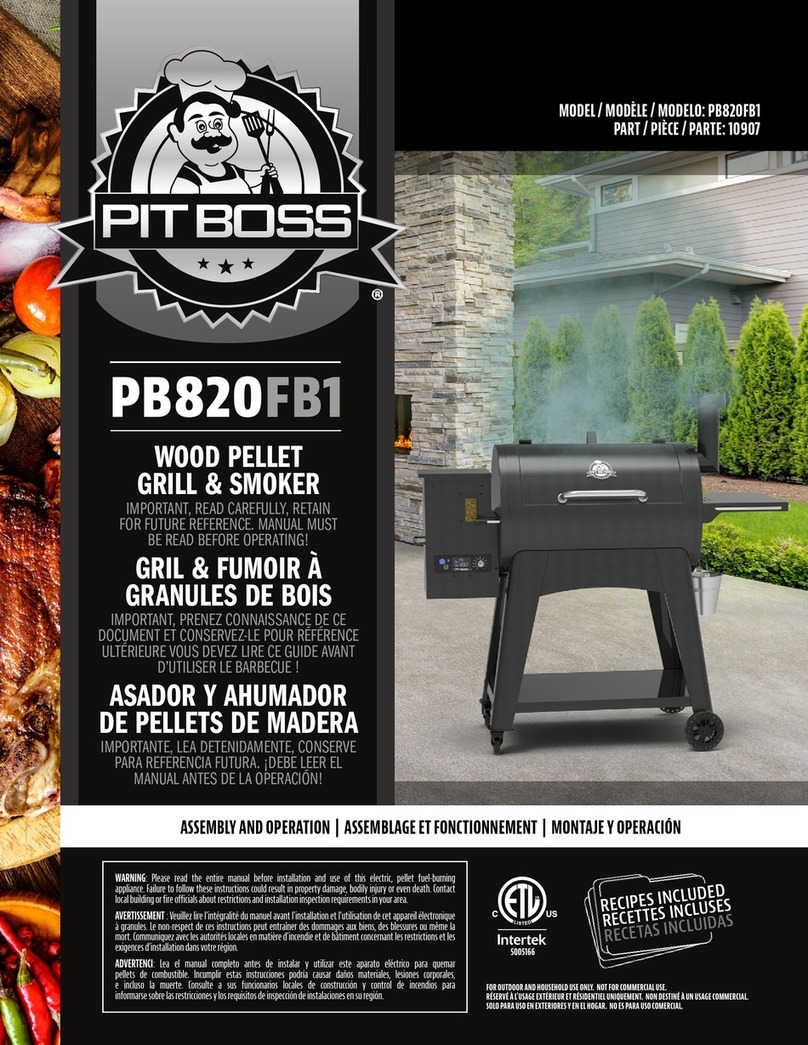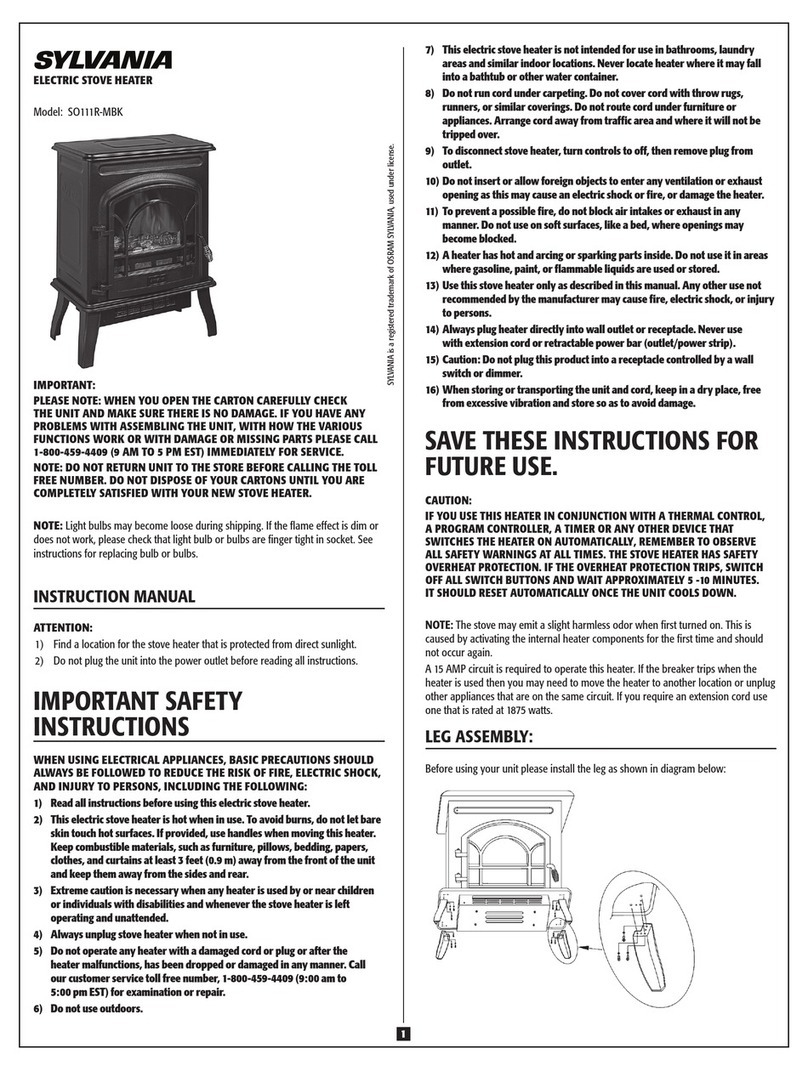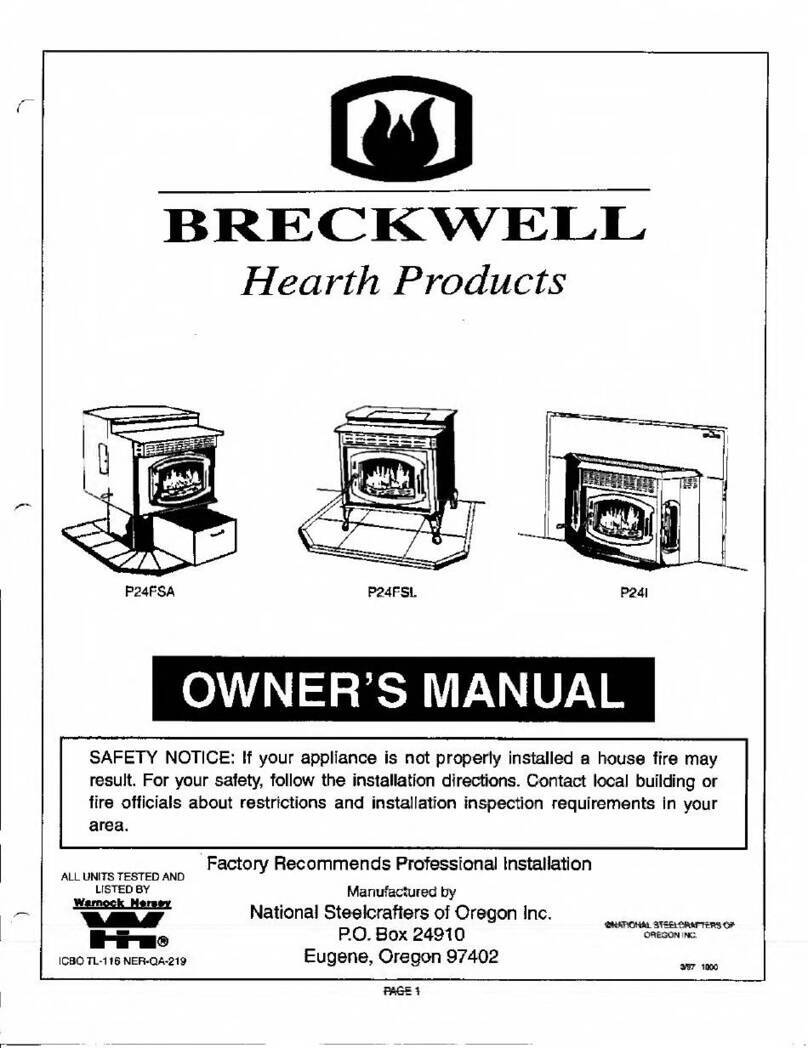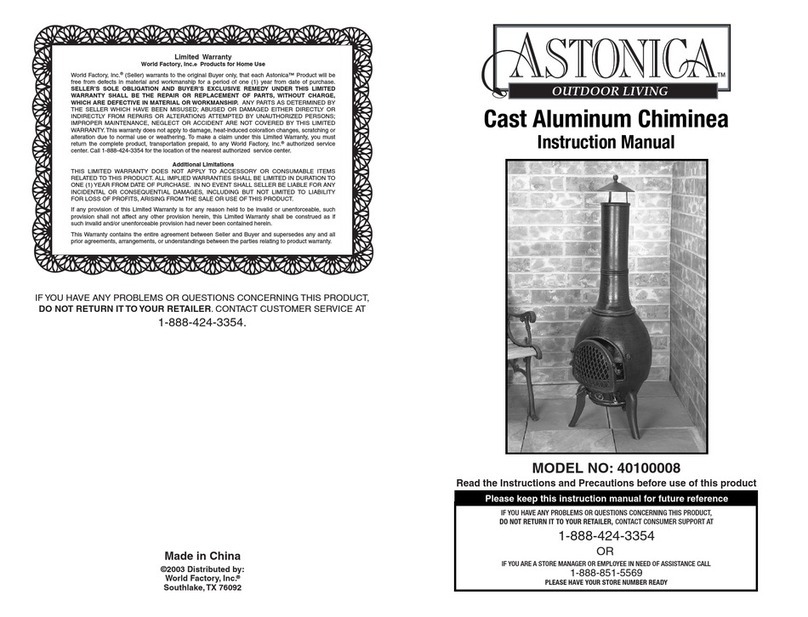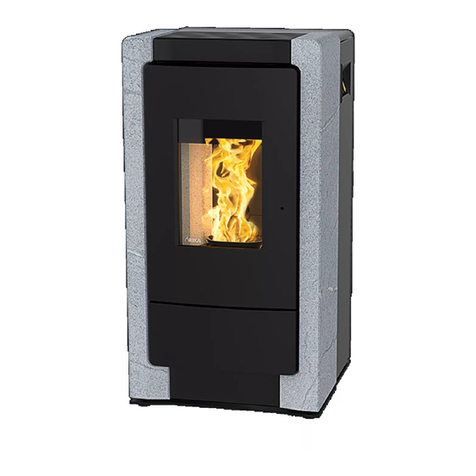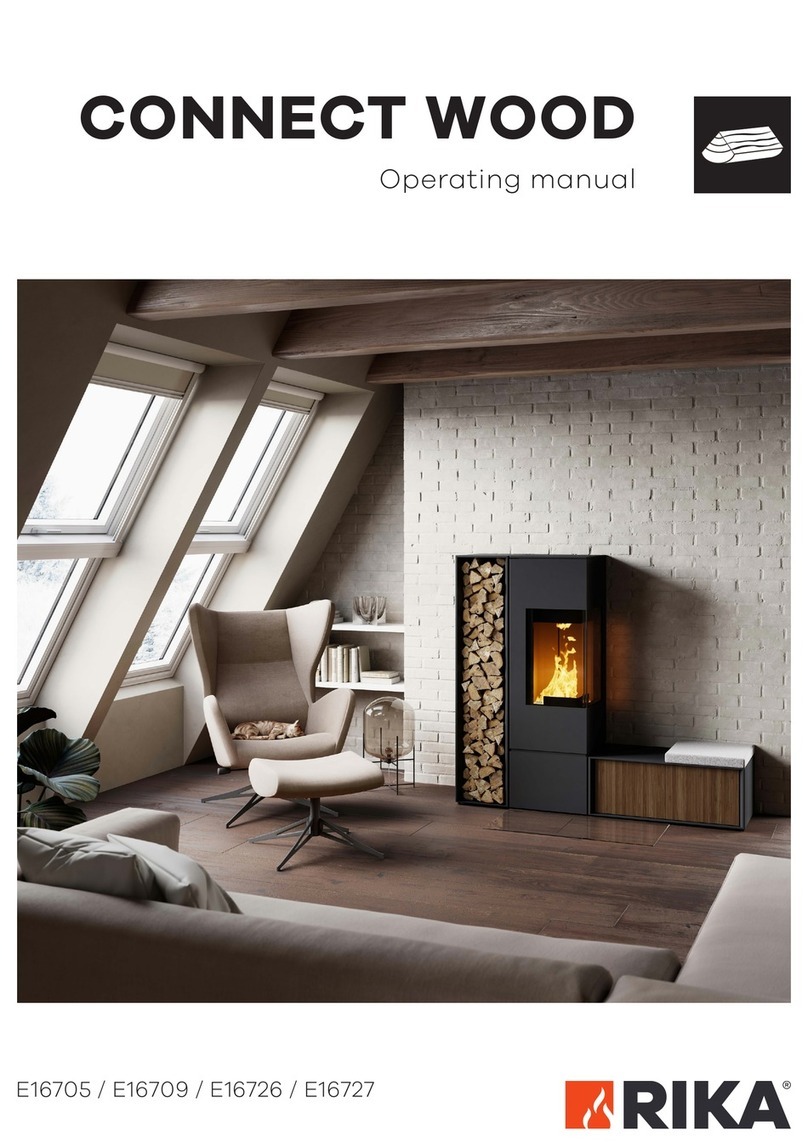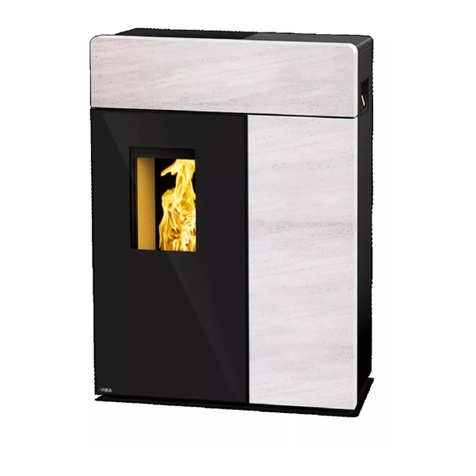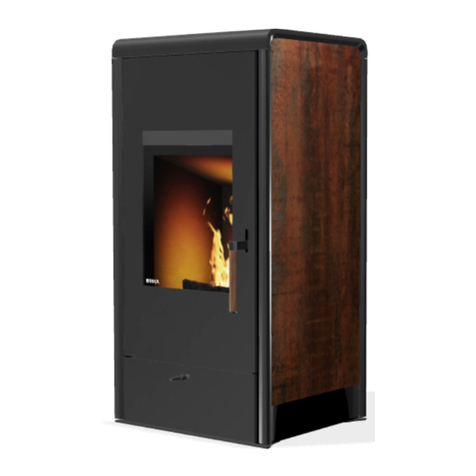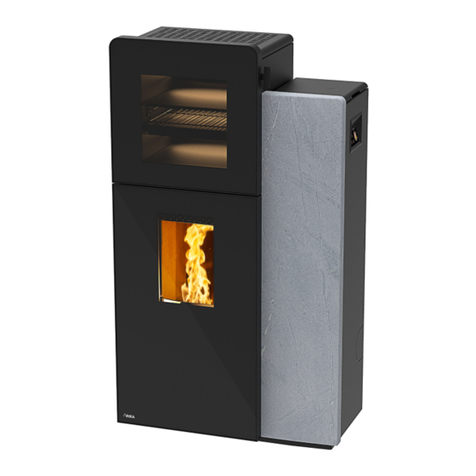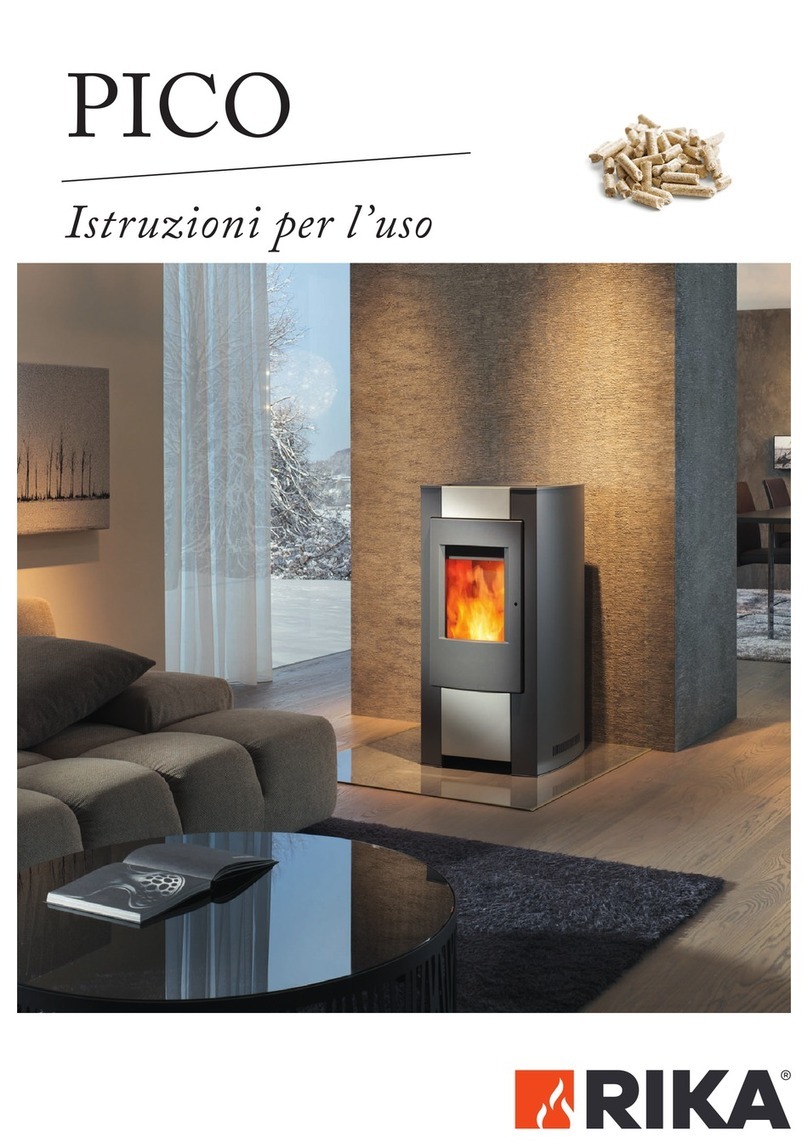
6
Spare part overview article numbers
Nr. Art.Nr. Description
1 B17160 Decorative door
2 N100173 Washer M06
3 N103964 Hexagonal screw
4 N112551 Round sealing strip grey D11
5 N103693 Flat seal black 8x2
6 Z34977 Hinge plate
7 N111846 Hexagon socket 06x12
8 Z35245 Hinge
9 N105179 Hexagonal nut M10
10 Z34983 Combustion chamber door glass
11 N111964 Hexagonal screw
12 L00475 Glass holder
13 B17188 Combustion chamber door black assy
14 N111950 Hexagonal screw M05x10
15 N111965 Washer M05
16 L02220 Lock tongue
17 N107521 Hexagonal screw M05x12
18 L02216 Closure flap
19 N111801 Grub screw
20 Z34978 Locking bolt
21 Z35251 Locking pipe
22 L02219 Holder plate
23 N111856 Hexagonal countersunk screw M04x12
24 N112018 Key
25 N112047 Hexagon socket screw M08x35
26 Z34846 Cover
27 N100485 Round sealing strip black D12
28 *1 Z34872 Baffle 2
28 *2 Z36343 Baffle plate 2
29 Z35095 Baffle plate 1
30 Z36574 Cast rear panel
31 Z36594 Firebrick lining rear right
32 Z36592 Firebrick lining front right
33 N103066 Round sealing strip black D06
34 B16310 Fire trough holder
35 Z35061 Support firebrick lining
36 N111846 Hexagon socket 06x12
37 L02215 Ash drawer
38 N111959 Square nut M05
39 *3 Z35244 Cleaning cover
39 *4 B17320 Cleaning cover compete
N103066 Round sealing strip black D06
40 Z35060 Fire trough
41 Z36593 Firebrick lining front left
42 Z36595 Firebrick lining rear left
Z36806 Firebrick lining rear left till serial number
1314344
43 LB00554 Convection cover black
LB00558 Convection cover silver
44 LB00552 Rear wall black (from serial no. 1317485)
B17317 Rear wall black (till serial no. 1317484)
LB00556 Rear wall silver (from serial no. 1317485)
B17318 Rear wall silver (till serial no. 1317484)
45 B17171 Side panel glass black right
B17156 Side panel rust effect right
B17163 Side panel rust effect metallic right
B17167 Side panel slate white right
B17170 Side panel slate black right
L02421 Side casing panel, right black
46 L02334 Rear panel black
L02339 Rear panel silver
47 L02327 Botton side panel holder ( stone )
48 *5 N111695 Height adjustment screw
Nr. Art.Nr. Description
48 *6 N112490 Levelling screw black
49 LB00553 Front panel black (from serial no. 1317485)
B17315 Front panel black (till serial no. 1317484)
LB00557 Front panel silver (from serial no. 1317485)
B17316 Front panel silver (till serial no. 1317484)
50 B17172 Side panel glass black left
B17157 Side panel rust effect left
B17165 Side panel rust effect metallic left
B17168 Side panel slate white left
B17169 Side panel slate black left
L02420 Side casing panel, left black
51 L01502 Lock washer
52 N110461 Double ball catch
53 L01446 Lock washer
54 L01445 Switch spacer
55 N111733 Solenoid switch bottom part
56 N111732 Magnetic switch top part
57 N111731 Container seal
58 L02331 Container lid black
L02338 Container lid silver
59 L01976 Hinge guidance
60 L01977 Hinge part
61 L01975 Hinge guidance
62 B16114 Temperature sensor
63 B15248 Sensor tube
64 Z35183 Friction bearing Di10
65 B16967 Auger
66 *7 Z35182 Friction bearing Di16
67 Z11915 Lock ring conveyer screw
68 N111058 Setscrew with pin
69 N112030 Screw motor, stepless
70 Z35239 Seal
71 Z35240 Spacer
72 B16155 Induced draft fan housing
73 N111581 Induced draft fan motor
74 N111551 Silicon hose
75 N112102 Differential pressure switch
76 N111604 Fuse 2,5 A
77 B16561 Mainboard USB11
78 B16030 Additional motherboard for motor, incl. cable
79 B17014 Ceramic ignition
80 B17158 Touch-display screwable
80 *8 B16574 Touch-display plug-in
81 N112032 Screw 2,5x7
B17333 Wiring harness
Z35018 Cable for touch-screen 1,25 m
Z34841 Cable for additional motherboard
L00797 Motor plate
N112068 Two-component adhesive
B18055 Combustion chamber kit till serial number
1314344
*9 B18056 Combustion chamber kit
*1 till serial number 1356409
*2 from serial number 1356410
*3 till serial number 1323548
*4 from serial number 1323549
*5 till serial number 1361657
*6 from serial number 1361658
*7
up to serial number 1331613 the motor
plate (L00797) must be supplied as a spare
part when replacing the plastic bearing Di16
(Z35182).
*8 for execution side panel steel
*9 serial number 1314345 till 1376106
Note: Please consider the powdercoated parts can differ slightly in colour and colour effects though they are elaborated in high quality.











